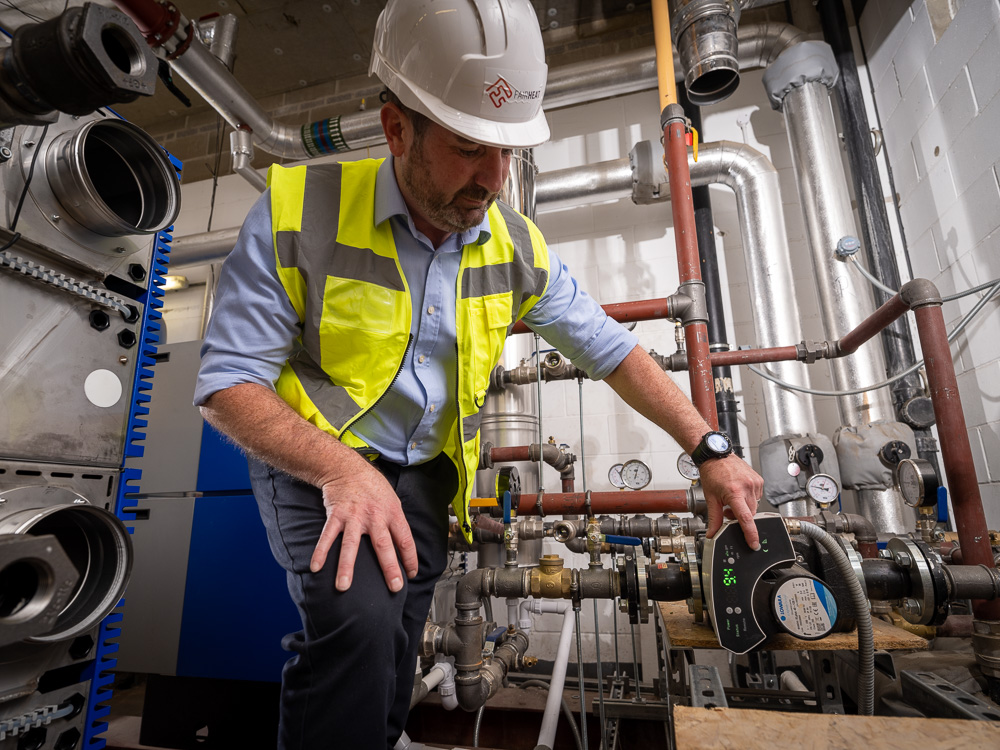Rachel Davidson, Director of Specialist Knowledge, BESA
Building Engineering Services Association (BESA)

Awareness improving but safety change is too slow
Research shows that awareness of the Building Safety Act and its implications is rising, but the pace of real change remains much too slow, according to Rachel Davidson, BESA’s Head of Specialist Knowledge.
An industry-wide survey, carried out in late 2024 by AMA Research on behalf of BESA, reported that 88% of respondents showed some awareness of the Building Safety Act with almost a third claiming to be “fully aware”. There were higher levels of awareness among BESA members than the wider industry, but detailed understanding of roles and responsibilities was decidedly mixed and varied by building and project type.
Compliance and legal understanding of the legislation, which came into force in 2022, are proving to be significant challenges for organisations who told researchers they needed more training and a closer working relationship with the Regulator to embed the changes required to improve building safety.
Also, most contractors believe the Act has only had a minimal impact on their businesses so far. According to the report, 65% of respondents said it had been neither a positive nor a negative factor to date – and just 9% reported making “significant changes” to help them comply with the legislation.
Our aim in commissioning the research was to get a clearer picture of the level of industry awareness, understanding and readiness so it could adapt the services and specialist knowledge it provides to support the industry through this challenging and rapidly changing period.
Challenges
We are also hopeful that it will help the Building Safety Regulator gain a better understanding of the sector’s position and challenges, so that it can also improve the way it supports compliance.
Detailed understanding is patchy at best and varies considerably by building and project type. However, there is a general perception that the legislation is having a positive impact by driving culture change. However, we need to be realistic and acknowledge that the pace of change is too slow and there is still a lot of work to be done to shift the industry’s focus from speed and cost to putting quality first.
The AMA survey showed that awareness of the legislation is higher amongst those working on high rise buildings, with those working on new construction projects and major refurbishments also more likely to be aware of the Act. Levels of awareness also vary according to company size with larger organisations, both in terms of turnover and number of employees, shown to be more up-to-speed.
Several firms have used the Act, and the wider post-Grenfell context, as an opportunity to re-set employees’ focus on what makes them good at their jobs and where they find deficiencies, to carry out more training. However, this is far from universal and access to appropriate training remains another key challenge for our sector and one that BESA is pursuing vigorously.
In his foreword to the report, BESA chief executive officer David Frise said the Association was determined to keep playing a leading role in driving culture change and raising standards of building quality.
“BESA is 120 years old this year and our members have spent much of that time ensuring buildings can be ‘safe havens’ for people from the deprivations of cold, heat, pollution, noise etc,” he said. “These aims are even more important in the modern world and the fact that the occupants of Grenfell Tower were failed so desperately was an almighty wake-up call for how large parts of our industry had lost their way.
“Most people do not go out deliberately to do a bad job – a fact that was acknowledged by the Grenfell public inquiry,” said Frise.
However, changing the mindset of a whole industry to focus on quality rather than price, and ensuring everyone understands their role and responsibilities under the Act, backed up by consistent evidence of competence (skills, knowledge, experience, and behaviour) is the only way forward.
BESA provides resources to help its members, and others, step up to this challenge. We have our Building Safety Act Hub which is a dedicated digital resource developed to keep the sector up-to-date with the latest developments, tools and regulatory information related to Act.
For those wondering about their role and responsibilities, the interactive Play it Safe Guide uses football to illustrate how companies and individuals fit into the ‘team’ needed to deliver building safety and comply with the legislation.

Capability
Firms can demonstrate their organisational capability through BESA’s Competence Assessment Standard (CAS), which is a rigorous business management review and technical audit which enables a company to demonstrate its organisational capability, as required by the Building Safety Act.
Passing this audit demonstrates a commitment to excellence, offering a distinct advantage in competitive tendering and client assurance. It also instils confidence in stakeholders that they’re working with a certified, competent business that adheres to the requirements of the Building Safety Act.
BESA also set about reviewing its relevant technical guidance in light of the Grenfell Tower public inquiry. Our long-established industry guidance DW145 ‘Installation of Fire Dampers and Smoke Dampers’ was quickly identified as a priority because of its central role in ensuring the highest possible standards of design, installation and inspection of this frontline fire safety technology – and the way it helps contractors meet those standards.

The diligent work of the committee who carried out this revision was given added urgency by the high number of reports received by BESA from maintenance engineers who had found, during annual inspections, a significant number of incorrectly installed dampers that did not comply with manufacturers’ instructions. Ultimately, this meant that many would fail in the event of a fire.
Other standards that contribute to the safety agenda include:
- DW144: This ductwork standard is essential for creating and maintaining safe, efficient ventilation systems. By following these guidelines, users can design and implement ductwork that meets BSA requirements for fire safety, air quality and environmental efficiency.
- DW172: For those involved in kitchen ventilation, DW172 provides comprehensive guidelines on safety, performance, and hygiene. Following this standard helps facilities managers and designers comply with BSA regulations for high-risk areas like commercial kitchens.
- BIM Standards: Building Information Modelling (BIM) is an invaluable tool for maintaining the “golden thread” of information required by the BSA. BESA membership grants access to BIM guidelines that help members manage detailed, up-to-date records of building designs, modifications, and maintenance, which is a core component of BSA compliance.
The BESA Building Safety Act advisory group continues to work towards a safer and more compliant industry, but it has highlighted the pressures contractors face in light of current commercial realities and the investment needed to embed a safety-first culture.
Planning delays and cost over-runs can now be directly attributed to the Act and the under-resourcing of planning and building control departments. This is creating anxiety and tension across the sector.
BESA will, therefore, focus on the practical implications for contractors throughout 2025. We will look to help members, and others, improve data gathering and production of evidence that supports safer buildings, but also within the context of business issues like late payment and insolvency risk.
New buildings are highly likely to be safer, but the existing stock is a huge (potentially insurmountable) problem without a focus on funding and public resource. The pressure for a national retrofit programme will grow and this is another priority during 2025 because tens of thousands of people are still living in unsafe buildings.



